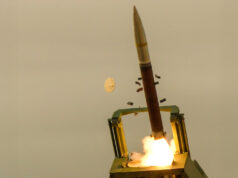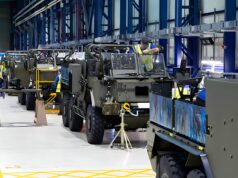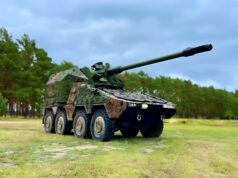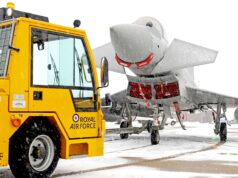BAE Systems Hägglunds has received a contract from the Swiss Federal Office for Defense Procurement for the life-extension of the Swiss Army’s CV9030, known as the ‘Schützenpanzer 2000’.
The life-extension program of the CV9030 will keep the 186 vehicle fleet in service until 2040 and significantly improve the platform’s ability in certain areas.
According to a press release from the firm:
“The improvements are mainly based on previous obsolescence issues in the area of optical, electrical and electronic components. They also include the installation of Active Damping technology which reduces wear and tear, minimizes through-life repair costs, improves speed in terrain and ride comfort. A new improved electronics architecture will support adapting to future technology growth. The vehicles will also be fitted with a 360-degree surveillance system, increasing situational awareness, combat effectiveness, and survivability to enable safer route planning and more rapid targeting.
As part of the contract, BAE Systems Hägglunds, the original manufacturer of the CV90, has already been working closely with Swiss industry to meet the industrial cooperation requirements. The program will involve multiple suppliers based across all regions of Switzerland. Selected companies will produce items such as the next generation of electronic boxes for the CV90s, electrical cables, and mechanical components.”
“We are truly proud to be awarded this life-extension contract by armasuisse. We look forward to further deepening the relationship with our Swiss customer and working together with the Army, as well as national and regional industry for many years to come,” said Tommy Gustafsson-Rask, managing director of BAE Systems Hägglunds.
“Together we are making sure this proven vehicle remains modern and capable through 2040 and beyond.”
Switzerland is one of seven European users operating the CV90. The other six are Denmark, Estonia, Finland, Norway, Sweden and the Netherlands.














Seems the CV90 would have been a better choice than AJAX due to the delays and better off road performance !
Big time.
Had Cv90 been selected LM would not have been allowed anywhere near the Turret. The same would apply for Warrior LEP.
Im sure BAE would have found their own creative ways to increases costs and push out dates, but realistically both vehicles would have been midway through delivery now and safe from cuts.
That would allow the army to focus on Boxer, Mrvp, C2 LEP and Indirect fire. Instead we have 6 programs all urgently required and a big squeeze in budgets even with the planned budget increase something will need to be dropped due to the billions waste in poor decision making and delays.
At the time, all politics aside, the CV90 didn’t have the ISTAR assets needed, nor was it a “digital platform” enabling open architecture. The Ajax project provided these to meet the MOD requirements.
Neither did Ascod. It was all developed over the lifetime of the program. It was a political decision because the Tories wanted to punish BAE over the Nimrod and Astute cost over runs and BAE wanted to build the Cv90 in Sweden. They literally snatched defeat from the Jaws of victory with their pitch. Ajax is still an excellent platform but selecting LM as the primary contractor for the turret was moronic beyond belief.